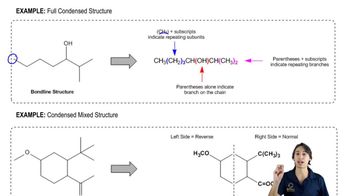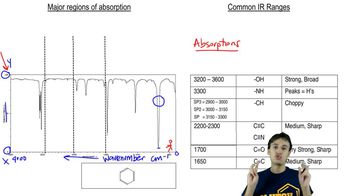Identify each of the following compounds from its molecular formula and its IR and 1H NMR spectra:
b. C6H12O2
<IMAGE>
 Verified step by step guidance
Verified step by step guidance Verified video answer for a similar problem:
Verified video answer for a similar problem:



 11:19m
11:19mMaster Building Molecular Sentences with a bite sized video explanation from Johnny
Start learning